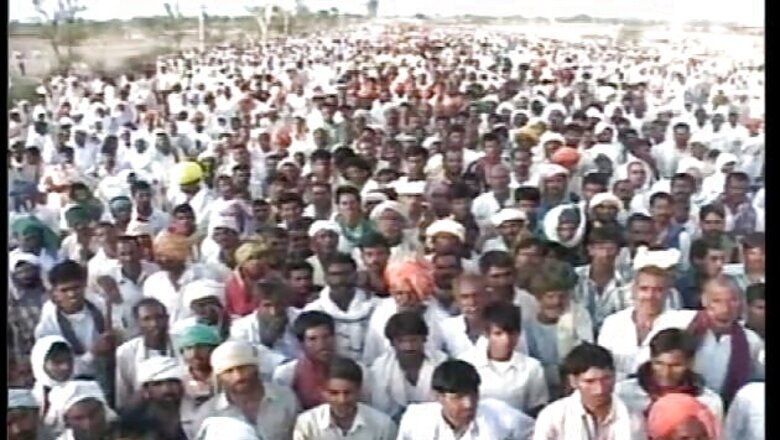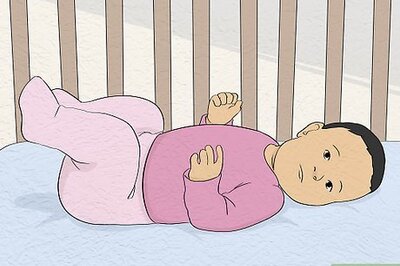
views
Amidst the anti-corruption slogans of AAP, BJP's plight, or Congress's desperation to continue in power, the 'caste' factor still plays a vital role when it comes to choosing parties.
It may not be easy for political parties to woo voters in Delhi who often weigh caste and party loyalties before casting their ballots.
Caste could be a decisive factor in around 20 constituencies in outer and rural Delhi as residents in these areas often prefer candidates from their community rather than being influenced by other factors. Of the 364 villages in Delhi, around 225 are dominated by Jat community while in 70 villages, Gujjars have majority.
The Yadavs have majority in 35 villages. The Jat community can be a deciding factor in at least eight constituencies including Mehrauli, Mundka, Rithala, Nangloi, Matiala, Najafgarh and Bijwasan. The community comprises 10 per cent of the total voters while the Gujjars constitute 7 per cent votes.
The percentage of SC community is 17 per cent, Muslims comprise 12 per cent and Punjabis 9 per cent. The Sikh community has a total vote share of four per cent while the Vaish community has 8 per cent vote share. The support of Gujjar community will be crucial in Badarpur, Tughlakabad, Sangam Vihar, Gonda, Gokulpuri, Karawal Nagar and Okhla.
From slums of East Delhi to posh Lutyen's Bungalow zone, caste factor may be a significant factor and BJP and Congress are likely to benefit most as these two parties have fielded maximum candidates considering the caste equation.
Kotla Mubarkpur, a Gurjjar-dominated ward under Kasturba Nagar Constituency (AC no 42) in south Delhi has issues, akin to many semi-urban areas in Delhi, like waterlogging and drainage, and garbage disposal, among others, but caste seems to "weigh more on people's mind than the ballot itself".
"While voting for general elections one must see work but for assembly and municipal elections one must align along one's caste. And, we anyway receive pressure from our family and friends to vote for our caste only," Raj Kumar, 44, a trader living in Kotla Mubarkpur, said.
Apart from caste allegiance, party loyalty too is also likely to be a strong factor in deciding the fate of the candidates as AAP will find it hard to wean the loyal voters away from Congress or BJP, notwithstanding its agenda to "change the system".
AAP is contesting the elections on the plank of giving corruption free government, reducing power tariff by 50 per cent and providing free 700 litres potable water daily to each household.
So, for traders like 62-year-old Ramesh Chandra, resident of south Delhi's Kotla Mubarakpur who owns a cloth shop, loyalty to Congress is "too strong to stray away from". "I have been a supporter of Congress and I will not shift my loyalty," he said.
Despite aggressive campaigns like 'broom-bearing' posters plastered around the streets and bylanes of the city and drawing the support of autorickshaw drivers, it still remains to be seen how much support to the new party actually translate into votes.
"We are supportive of AAP's agenda. But I do not think it will be able to form a government. So I may not vote for AAP," said Jagjit Singh, a resident of Mundka. After three consecutive victories, Chief Minister Sheila Dikshit believes the party's track record will itself "motivate voters".
But, Opposition BJP, which swept all three corporations seats in the city's municipal election last year, calls the victories "as reflection of people's changing mood" and as "precursor to the big change ahead". BJP-led South Delhi Municipal Corporation Mayor Sarita Chaudhary alleged that ruling Congress has only offered "promises" and not matched them with "performances".
"Inflation, corruption and unauthorised colonies are going to be the major issues in this election. As part of our 'Ghar Ghar Bhajpa' campaign, leaders and party workers are visiting and meeting people door-to-door," Chaudhary told PTI. BJP is also making civic issues like drainage and waterlogging a major poll plank trying to put the Dikshit-led government on the backfoot.
"The current government has no concrete plan on that. As soon as we come to power, we will create a joint committee by taking all three bodies MCD, DDA and PWD together on this issue for a new drainage system to alleviate people's problems," she added.
On the other hand, Congress sitting MLAs like Neeraj Basoiya hope that it is party's work that will affect voters and not hype that "BJP and AAP are trying to sell to people".
Many voters, young and old also expressed anger at existing parties and showed no interest in new parties like AAP saying they would vote for nobody and "choose to go for none of the above" option. While it is still not clear as to how many seats the AAP will be able to corner but it seems it will cut into votes of both the ruling Congress and the BJP, despite the two major parties dismissing the one-year-old rival.
The total number of voters in the city have been estimated at 1,14,88,752 out which 63,68,694 are men and 51,19,517 are women voters. The young voters population stands at 3.04 per cent of the total electors population.

















Comments
0 comment